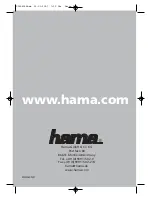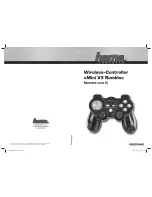
Design Considerations
CY8C20xx7/S CapSense
®
Design Guide
Doc. No. 001-78329 Rev. *E
54
Figure 5-3. GPIO Load Transient Noise in a CapSense System
GPIO Load Transient
Noise
LED is ON
LED is OFF
When current is sunk through a GPIO pin, the voltage at CapSense ground (GPIO PAD) will not be zero because of
the non-zero bond-wire resistance, R3. Because of the non-zero ground potential, the sensor will not be completely
discharged when LED is sinking current; this will cause an increase in the sensor raw count.
Figure 5-4. Ground Structure in CY8C20xx7/S
GPIO PAD
CapSense GND
GPIO GND
VSS
R1
R2
R3
GPIO PIN
CS Sensor
A
M
U
X
Note:
R1, R2, and R3 are bond wire resistances.
For a robust CapSense design, the worst-case GPIO transient noise should be less than 30 percent of the finger
touch signal. The worst-case noise appears in the CapSense system when the GPIO state is changed from a no-
current-flow state (for example, all LEDs OFF) to a maximum current flow state (for example, all LEDs ON).
The GPIO load transient noise increases with the sensor scan resolution. CapSense sensors with a high parasitic
capacitance or proximity sensors require higher sensor-scan resolution to achieve an SNR greater than 5:1. In such
systems, the effect of GPIO load transient is more pronounced. In some cases, the noise due to GPIO load transient
might be higher than the signal due to finger touch and cause sensor false-triggers. The following section shows how
to reduce GPIO load transient noise.
5.7.1 Hardware Guidelines to Reduce GPIO Load Transient Noise
Reduce Sensor C
P
The sensor C
P
determines the sensor scan resolution parameter. The larger the C
P,
the
higher will be the
resolution parameter required to achieve an SNR greater than 5:1. Setting a high-resolution parameter causes
















































